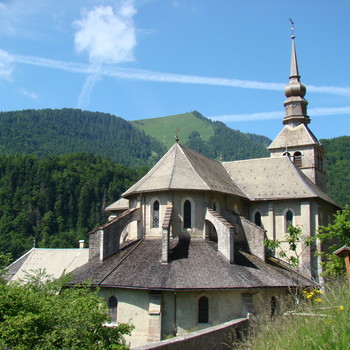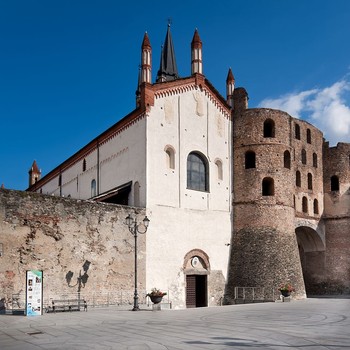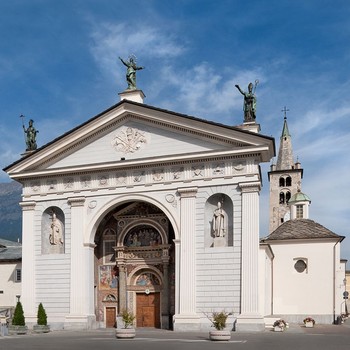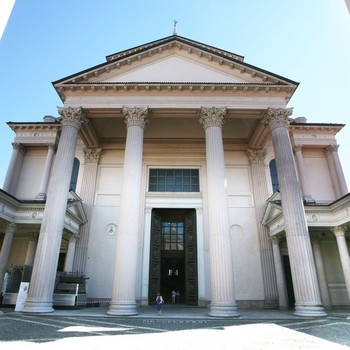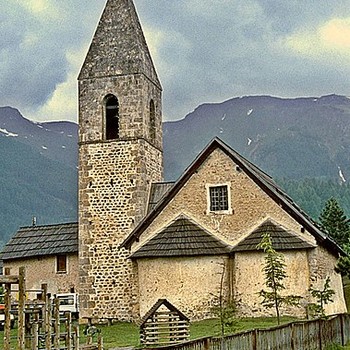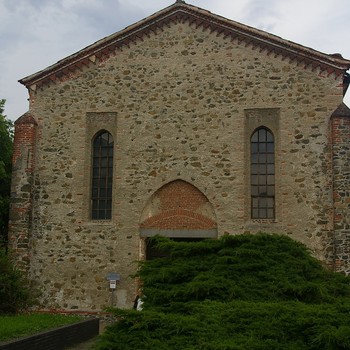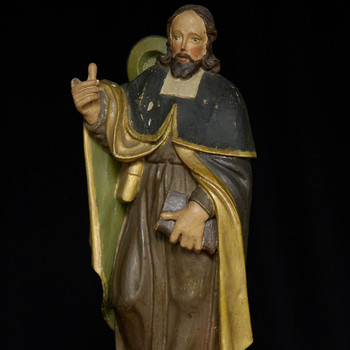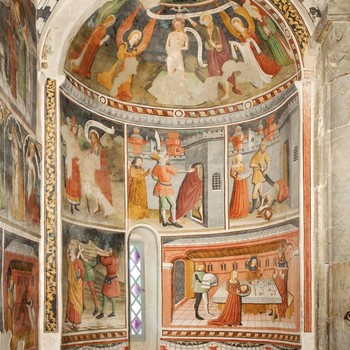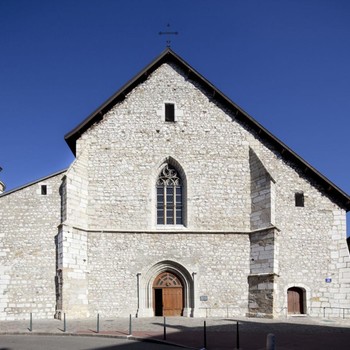Abbaye Notre-Dame
Diocesi di Susa ( sec. XII )
The abbey was founded in the 12th century in the department of Haute-Savoie. The 15th-century cloister contains frescoes depicting stories from the Life of the Virgin, painted by artists similar in style to Jaquerio, and a rich sculptural apparatus.
Cathedral of San Giovenale
Diocesi di Cuneo-Fossano ( sec. XVIII )
Fossano Cathedral, dedicated to Saint Juvenal, patron of the city, was built in 1771 by the architect Mario Ludovico Quarini, while the bell tower dates back to the previous construction.
Cathedral of San Giusto
Diocesi di Susa ( sec. XI )
Cathedral of San Giusto, Diocese of Susa. Founded in 1027, it was a monastery until 1749, when it became a collegiate church, and then a cathedral in 1772. The building is in Romanesque style, with a Latin cross plan.
Cathedral of San Pietro
Diocesi di Alessandria ( sec. XIII; XIX )
The cathedral of San Pietro, in the diocese of Alessandria, is a 19th-century building that replaced an earlier Romanesque church, dating from the 13th century and demolished by order of Napoleon Bonaparte.
Cathedral of Santa Maria Assunta
Diocesi di Aosta ( sec. IV; XI; XIX )
Founded at the end of the 4th century, Aosta Cathedral was rebuilt seven centuries later. It was further modified by major refurbishments in the 15th–16th and 19th centuries.
Cathedral of Santa Maria Assunta
Diocesi di Novara ( sec. IV; XX )
Novara Cathedral is a complex building, whose 19th-century structure designed by Alessandro Antonelli features details from the Early Christian and Romanesque periods, while the interior houses a wealth of artworks.
Chapelle Saint Erige
Diocesi di Cuneo-Fossano ( sec. XIII )
Situated the Department of the Alpes-Maritimes, the chapel dates back to the 13th century or the first half of the 14th. It is decorated beautifully with frescoes created in 1451 by the anonymous Piedmontese fresco painter known as Maestro di Lusernetta.
Chapelle Sainte-Marie-Magdeleine de Villa
Diocesi di Aosta ( sec. XII )
The 12th-century church is characterised by its bell tower flanked by an arched spur. The façade and apse retain frescoes with saints on the outside and episodes from the life of Mary Magdalene on the inside, painted in 1463 by Giacomino da Ivrea.
Chiesa di San Bernardino
Diocesi di Ivrea ( sec. XV )
In the Olivetti industrial area, the church, which has belonged to the Minor Observants since 1455, preserves the partition with Stories from the Passion of Christ. Created by Martino Spanzotti, it represents an apex of 15th-century Po Valley painting.
Diocesan Museum System
Diocesi di Susa
Diocesan Museum System. Constituted by the network of ecclesiastic museums coordinated by the Diocesan Museum of Sacred Art of Susa, which collect together and display the religious artistic heritage of the Susa Valley.
Santuario di Nostra Signora delle Grazie
Diocesi di Mondovì ( sec. XV )
Built in the first half of the 15th century, the sanctuary preserves an extraordinary figurative programme on the walls of the north nave and in the left and major apses, which are the work of brothers Tommaso and Matteo Biazaci from 1483.
Église Saint-Maurice
Diocesi di Susa ( sec. XV )
Built starting in 1422 as a chapel of the Dominicans of Annecy in Haute-Savoie, it is the oldest of the four churches in the old town. Two extraordinary fragments of 15th-century wall decoration can be seen in the nave and choir.
Fresco Cycles

Frescoes are an Italian invention that combine the skilled preparation of walls with the mastery of the painter. In a single day (“giornata”) a fairly large area of “intonaco” (the final layer of plaster) can be painted “a buon fresco”. The paint penetrates the plaster, becoming a permanent part of the wall, unless problems arise and these would be due mostly to inadequate roof maintenance. Only in Italy have some artists been designated with names that relate to their ability to paint quickly: “fa presto” [works quickly] or “presto e bene” [fast and good]. Proof that the Piedmontese were equally skilled can be seen in the ancient paintings brought to light in the attic of Sant’Orso, in Aosta, and in Mattia Bortoloni’s magnificent decorative cycle for the Sanctuary of Vicoforte, but we might also mention Jaquerio in Ranverso, Spanzotti in Ivrea, Gaudenzio and Tanzio in Varallo, Pozzo in Mondovì, and Aliberti in Asti).



